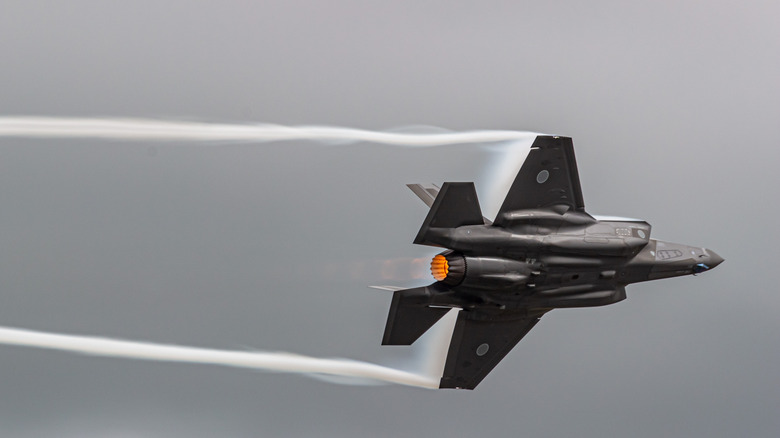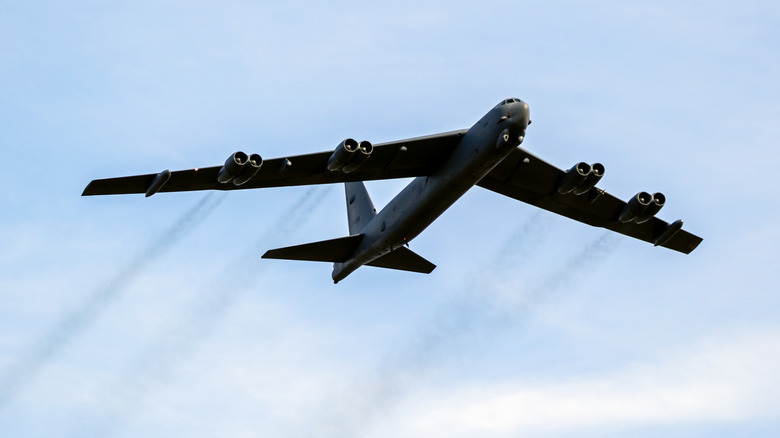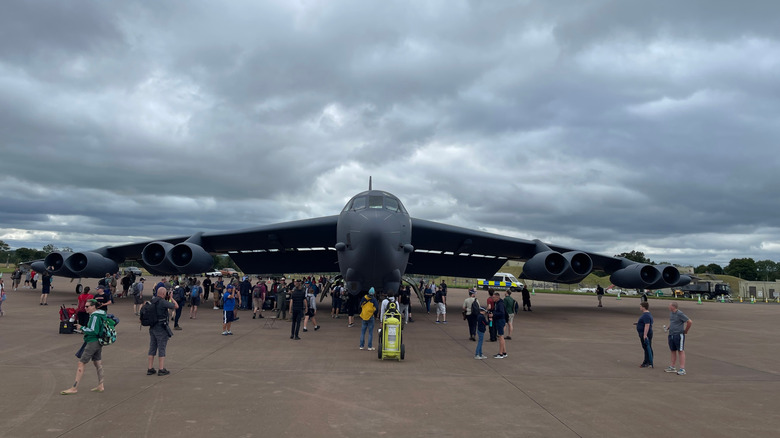Can Military Planes Land At Civilian Airports?
There are lots of things you're likely to see at airports. Old faithful Airbus A320s and Boeing 737s, for instance, and far more alcoholic drinks being consumed than really seems proper at 5:30 am. One thing you're generally not expecting to see at an airport, on the other hand, is a military airplane. Generally, they'd be as out of context here as an Airbus A350 on the back of an aircraft carrier. This isn't to say that one of the best fighter jets or another military aircraft couldn't land at a civilian airport, though. By their very nature, such aircraft are designed to push boundaries, to fulfil extraordinary roles, to be resourceful and, at times, to improvise to survive. An airport isn't a conventional place for such an aircraft, but it's often a safe one, and the capacity to land there is an important tool to have in a pilot's arsenal, whether it's likely to be used or not.
In April of 2024, Louisiana's Chennault International Airport welcomed an unusual pair of flights in to land: Twin B-52 bombers. The flight was a training exercise performed as part of the wider, ongoing Bayou Vigilance initiative, which, Air & Space Forces Magazine explains, "gives bomber air and ground crews a chance to practise responding quickly to a crisis."These particular B-52s were 52H Stratofortresses, to be precise, the last variant of the family still in service and a hefty aircraft indeed at just over 159 feet long and weighing 185,000 lbs, not to mention ordinance weighing 70,000 lbs. Military aircraft, then, absolutely can and do use civilian airports, and there are a range of unique situations in which they'll do so. Some military aircraft are far more formidable than they look, highlighting that care and discretion is key.
Why military planes would make such a landing
The long-lived B-52H Stratofortresses – still being flown after all these years – that landed at Chennault International Airport did so as part of a unique training exercise, a one-off that naturally resulted in a lot of red tape and safety protocol to be followed by both the military and the staff of the airport. Kevin Melton, the executive director of Chennault, said in a press release, "The 2nd BW and Chennault International Airport partnership is significant because it provides the wing an alternate location for training and operations, while at the same time demonstrating the viability and importance of the Department of Defense – civilian relationship." Interestingly, though, it isn't always so uncommon to see a military plane at an airport. In fact, at some facilities, they share space together on a regular basis.
The Federal Aviation Administration notes that there are no less than 21 so-called "joint use" airports, an arrangement that occurs, according to the FAA, "when a civil airport sponsor wants to arrange civilian access to a military airfield." Only one of these is a Navy airfield, MCAS Yuma in Arizona, while there are ten apiece for the Army and Air Force. A joint-use airport specifically, the FAA further clarifies, is a Department of Defense-owned facility. Two prominent examples are Charleston AFB in South Carolina and Blackstone AAF in Virginia. Larger civilian aircraft themselves need a lot of runway room to maneuver, and this can make them large enough, in some instances, to accommodate some military behemoths too. At the same time, though, it's not just a matter of space, as some of these aircraft require special equipment, supplies, and facilities that not all large airports are equipped to provide.
Emergency landings on civilians runways
Sometimes, as we've seen, airports are designated specifically for civilian and military aircraft, or special maneuvers are planned involving the latter landing at civilian airports. Outside of scenarios such as these, there are some obvious practical reasons that a military plane might land at a civilian airport. With their operations being unpredictable, a jet or other aircraft could find itself low on fuel or supplies rather far from its intended airbase. Should this happen, emergency refueling could be available at any airport capable of accommodating the aircraft in question. By the same token, you might also expect the same to work in reverse, and for a civilian aircraft to be able to access military installations in situations that would call for it.
In the case of the U.S. government, the Code of Federal Regulations carefully notes that "any aircraft operator with an inflight emergency may land at any Air Force airfield without prior authorization." Here, again, is that spirit of cooperation and integration that was shown as those B-52s soared into Chennault. It is generally not a common occurrence, but nor is it as rare as you might think it would be. In May 2025, RTÉ News reported that "almost 2,000 US military aircraft and US civil flights, with declared munitions of war on board, stopped at Irish airports over the last three years." Whether the reason is strategic, practical, for training, or otherwise, then, military aircraft can indeed land at commercial airports, if the specific base in question is equipped for their needs. Ardent planespotters, with some time to kill at the airport, might be fortunate enough to catch a glimpse of an Air Force, Army, or Navy plane coming in to land.


